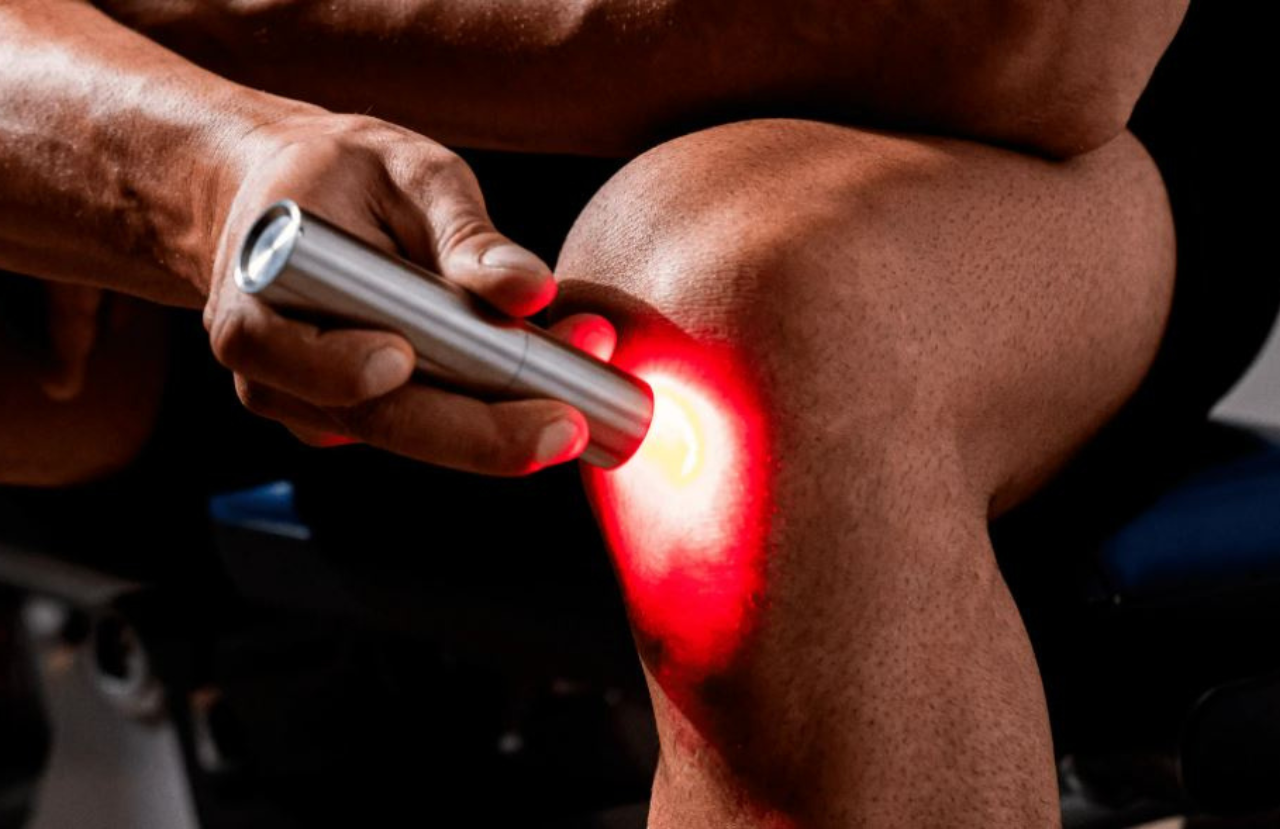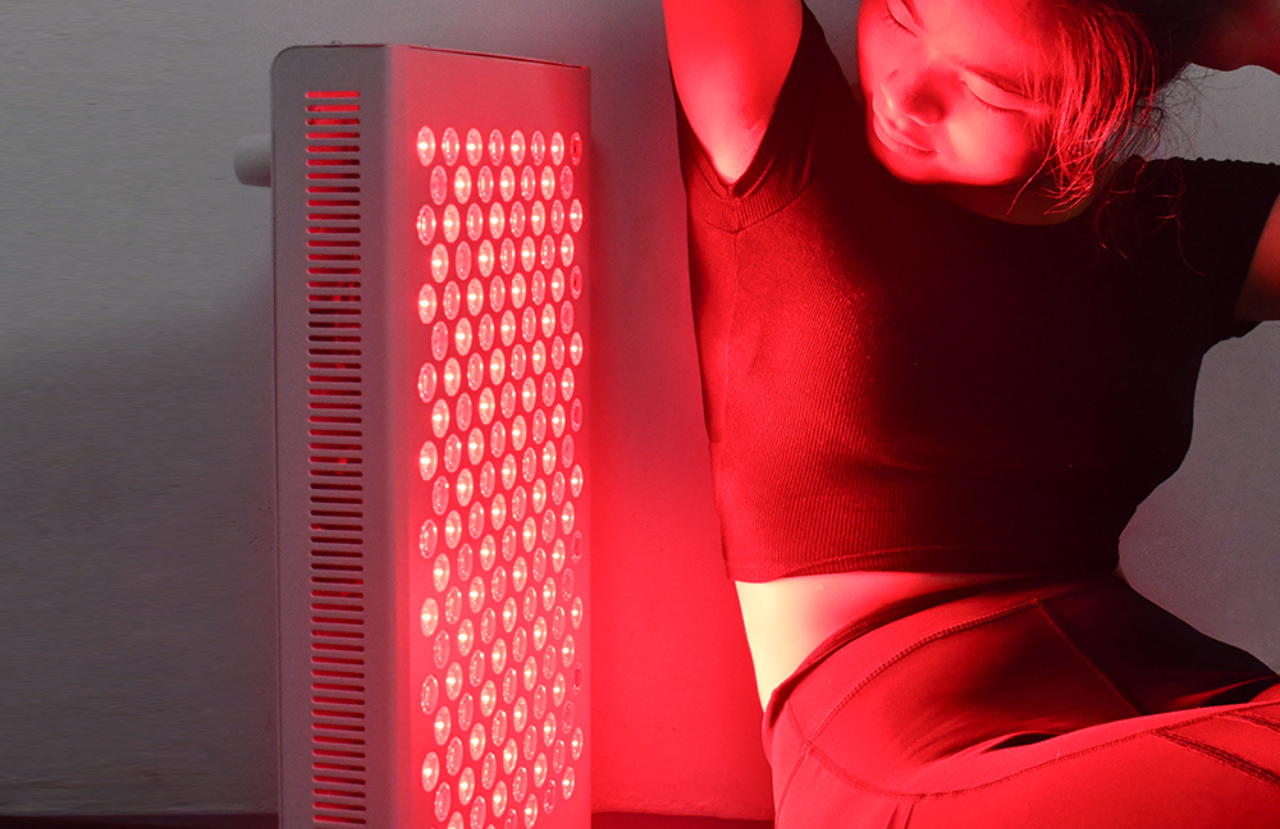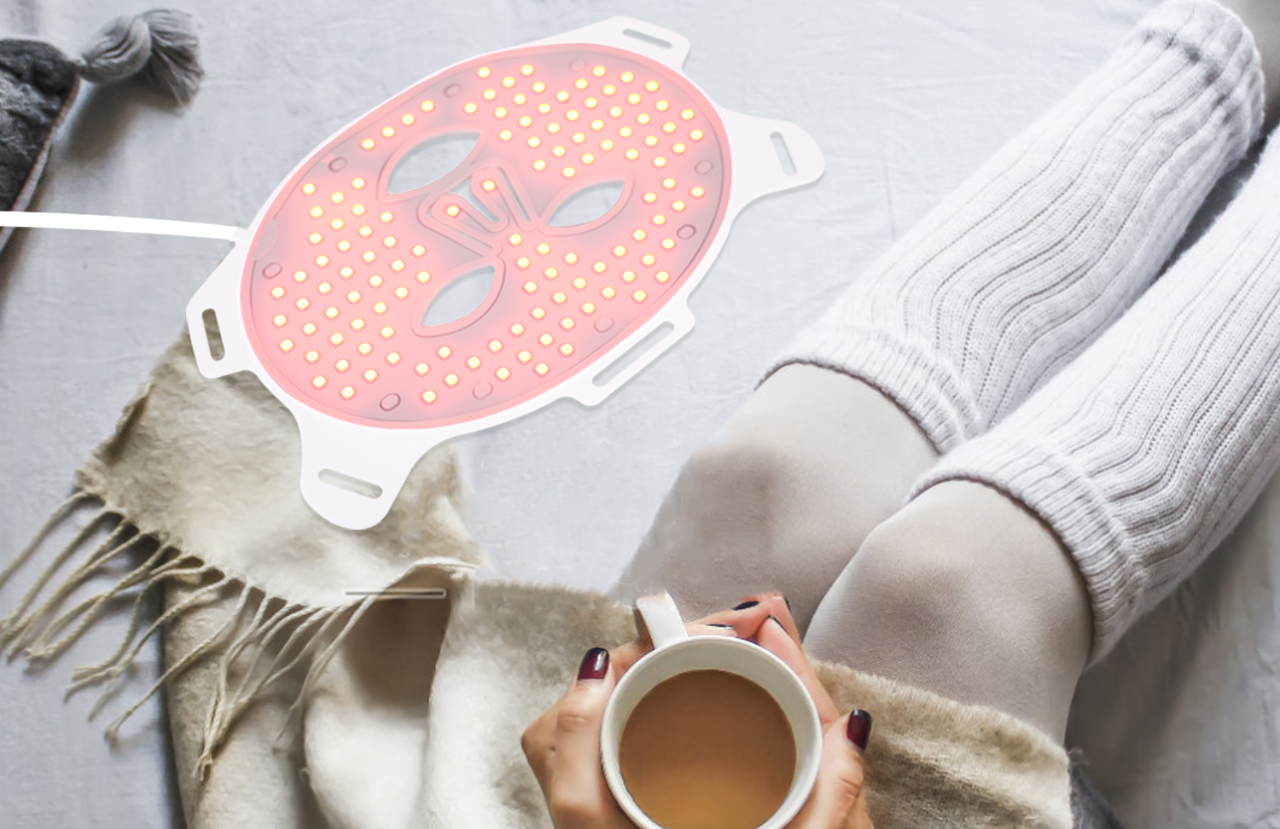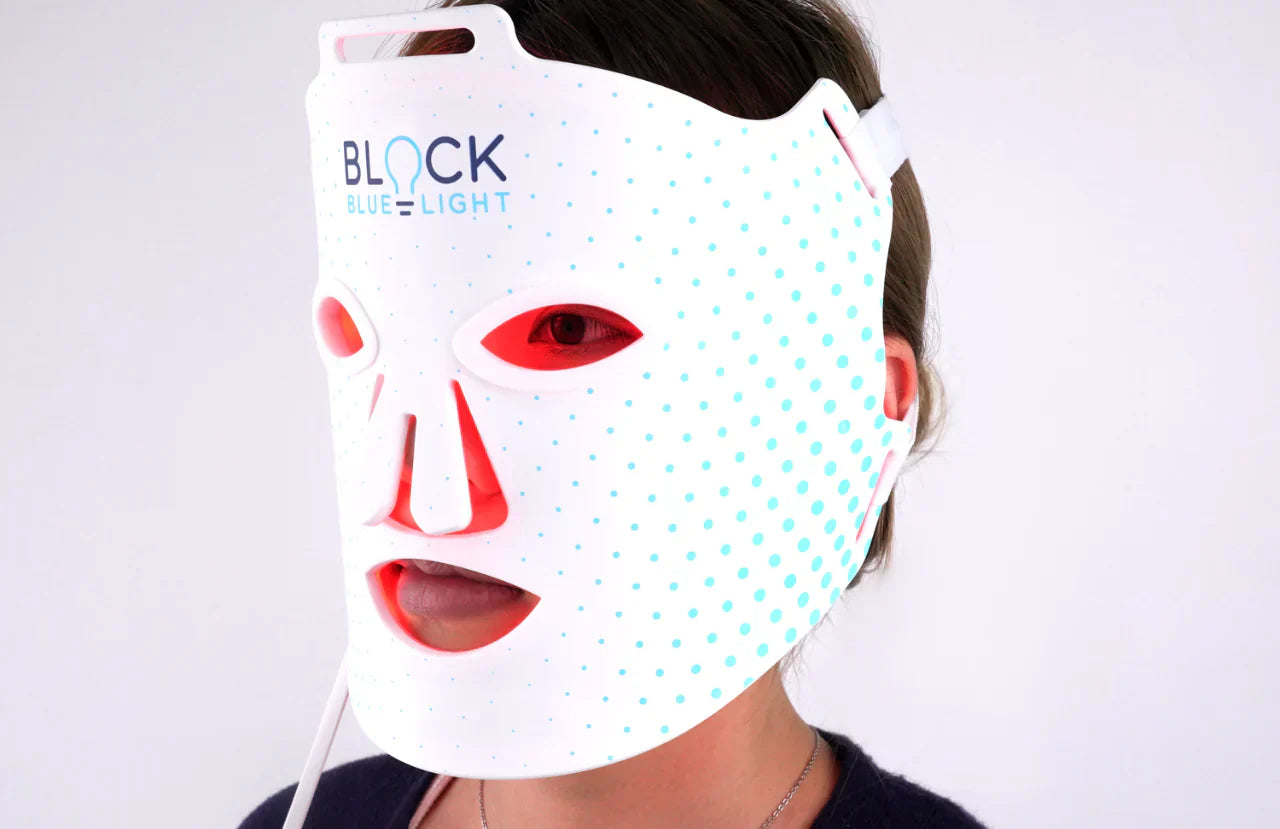Jump To Section
- What Is Inflammation?
- Are Anti-Inflammatory Drugs the Answer? (NSAIDs)
- What Is Red Light Therapy for Inflammation?
- What Is the Science Behind How Red Light Therapy Reduces Inflammation?
- How to Use Red Light Therapy at Home for Swelling and Inflammation
In the last two decades, red light therapy has become popular among medical practitioners as a non-invasive, natural treatment for inflammation. Because it’s so easy to use, many are choosing to do it conveniently and affordably at home.
Keep reading to find out if you should be worried about inflammation in your body, the science behind how red light reduces inflammation, how to use red light therapy devices at home for inflammation, and a clear-cut guide on how to get started.
What Is Inflammation?
When your body is attacked, such as when you’re injured or have an infection, your immune system triggers an inflammatory response. Blood vessels expand, causing immune cells to flood the affected area. This leads to the classic signs of inflammation—redness, heat, swelling, and pain. If the inflammation is severe, you may also experience a fever.

There are two main types of inflammation:
- Acute Inflammation: This helps heal wounds and fight infections, usually resolving after a few days.
- Chronic Inflammation: When inflammation persists for months or even years, it becomes chronic. This can occur due to autoimmune diseases, persistent infections, or prolonged exposure to irritants like toxins. Chronic inflammation is linked to a wide range of health problems, including arthritis, heart disease, and some types of cancer.
How to Know if You Have Chronic Inflammation: If you’ve been suffering from persistent fatigue, joint pain, digestive issues, swelling, or redness that lasts for months or years, you should get checked by a medical professional. Your practitioner may perform tests such as CRP or white blood cell tests to diagnose whether inflammation is the issue.
Are Anti-Inflammatory Drugs the Answer? (NSAIDs)
Even if you’ve never heard the term before, you’ve likely used NSAIDs. Drugs like ibuprofen, aspirin, and naproxen are used to treat mild inflammation, such as pain or fever. Depending on where you live, you may have bought them under various brand names such as Advil, Brufen, Nurofen, Midol, or Ibuleve.
While clinically proven safe for treating minor cases, these drugs can cause gastrointestinal issues, increase the risk of heart attack, and contribute to kidney damage if used over an extended period.
That’s where red light therapy comes in. There’s a growing interest in using red light therapy for chronic inflammation as a non-invasive alternative with minimal side effects. Also known as photobiomodulation (PBM) or low-level laser light therapy (LLLT), let’s explore whether it can help you.
What Is Red Light Therapy for Inflammation?
During red light therapy, you expose your body to specific wavelengths of red and near-infrared (NIR) light. These wavelengths penetrate the skin and reach the cells, stimulating energy production and reducing oxidative stress, leading to faster healing and reduced inflammation.

What Is the Science Behind How Red Light Therapy Reduces Inflammation?
Red light therapy targets the inflamed cells to reduce inflammation. Here are three ways it works:
- Boosts Cells’ Energy: Mitochondria are tiny organelles in each cell that produce energy for the body to function. There are 1,000 to 2,500 mitochondria in every cell (whether skin cells, brain cells, or blood cells), making up 25% of the cell volume. Red light stimulates the mitochondria to produce more energy (ATP). With more energy, cells can repair damage and reduce inflammation faster.
-
Reduces Oxidative Stress: Free radicals are unstable molecules in your body that have an unpaired electron. Although they are naturally produced as a byproduct in the body, they can also arise due to environmental stressors such as pollution, smoking, and UV light. Antioxidants are molecules that neutralize free radicals by donating electrons, preventing them from causing cellular damage. When there aren't enough antioxidants to balance the free radicals, the body experiences oxidative stress, leading to inflammation, cell damage, and contributing to more severe chronic conditions like cancer. Red light therapy has been shown to stimulate the production of antioxidant enzymes, such as superoxide dismutase (SOD) and glutathione, which help neutralize free radicals, thus restoring balance.
To sum it up, red light therapy works from within, targeting the root of the problem. It boosts your cells’ functioning instead of acting as a topical fix to patch up the issue. This strengthens your body in the long run. Unlike other treatments, red light therapy is painless, safe, and has minimal side effects. Extensive research backs up its effectiveness in reducing inflammation and promoting healing. - Improves Blood Flow: Red light increases circulation, bringing more oxygen and nutrients to the affected area while removing toxins. This improved blood flow aids in the healing process and reduces swelling and pain.
How to Use Red Light Therapy at Home for Swelling and Inflammation
Getting started with red light therapy at home is easier than you think. You just need a quality red light therapy device and the right approach. Here’s how to go about it:
Choose the Right Device:

- Size: Ensure it matches your target area. For full-body treatments, choose a large, powerful panel such as the Red Light Therapy PowerPanel—MEGA. For most individuals, mid-size panels costing $500 to $1,500 are the best fit. For example, a slightly more powerful option is the Red Light Therapy PowerPanel Mini, priced at AUD 599.
- Correct Wavelengths: Red light therapy devices should use both red and NIR wavelengths. Red light treats skin-deep conditions like sun-related skin damage, while NIR light penetrates deeper to address inflammation and deep-tissue concerns like bone, joint, muscle, or brain health. Red and NIR wavelengths are used simultaneously to target every layer of tissue and deliver the best results. Wavelengths between 600 to 650 nanometers (nm) are red light, and 800 to 850 nm are near-infrared light. The strongest red light therapy at-home devices have wavelengths between 660 nm (red light) and 850 nm (near-infrared light). All of BlockBlueLight’s therapy panels are optimized for these wavelengths.
- High Power Density: Power Density or Irradiance measures the light energy delivered to the skin, usually in milliwatts per square centimeter (mW/cm²). The stronger the panel, the more power it delivers. If the irradiance is too low, the wavelengths won’t travel deeply into the skin and be absorbed into the body’s tissues. The best medical-grade red light therapy devices have a power density of at least 100 mW/cm² at the treatment distance. For example, our Red Light Therapy PowerPanel—PRO delivers 160 mW/cm².
- LED Count: The panel emits red light through numerous light-emitting diodes (LEDs). A higher number of LEDs means more efficient light emission and uniform distribution.
- Certification: Ensure the device meets all safety standards and is government-approved. All our panels are FDA-registered and certified AS/NZS 60335.2.27:2020, AS/NZS 60335.1:2020, and CE.
- Free from Flicker and EMF: Flickering lights don't just cause discomfort and eye strain; they can disrupt light distribution, potentially reducing the panel's effectiveness. All our red light panels run on 24V DC, removing all harmful flicker.
- Safety Features: Our devices have timers, so you can set a timer to prevent accidental prolonged use, which could burn your skin. Red light therapy is very relaxing, and people often fall asleep with it on, so the timer is crucial. All our panels come with safety goggles to protect your eyes from prolonged exposure to intense light.
How to Use Red Light Therapy for Inflammation
Whether you’re using red light therapy for joint inflammation or muscle pain, here’s how to have a successful session:
- Clean the treatment area of any dirt or creams (unless you’re using it to help your creams absorb better).
- Position the device 6 to 12 inches away from the area you’re targeting.
- Set the Timer: Our customers have shared many stories of falling asleep with the panel on because it’s so relaxing. So, set a 10 to 20-minute timer to prevent the risk of getting burned.
- Put on your goggles: If you’re targeting an area near your face, wear the safety goggles that come with your device. Red light hasn’t been documented to harm the eyes, but it’s better to be safe than sorry.
- Turn on the device and relax. Make this time enjoyable—listen to music or meditate while the therapy works its magic.
- Consistency Is Key! Aim for 10 to 20-minute sessions, at least 3 to 5 times a week, to see optimal results.
References:
- https://www.ncbi.nlm.nih.gov/pmc/articles/PMC5523874/
- https://www.ncbi.nlm.nih.gov/pmc/articles/PMC10531845/
To learn more about red light therapy, refer to the following articles:





